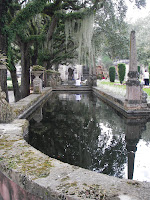
My fondest memories of Easter are a jumble of colors, the race to collect the most eggs, new dresses that we wore in chilly weather and how cold we were in our short-sleeved dresses with purses that looked like little bird cages. There were the daffodils at a family farm in northern Virginia, religious celebrations and, of course, too much candy.
When I first visited France, the story was that church bells, which had been silent for a few days because they traveled to Rome, left chocolate eggs on their return home. But things have changed, and today the Easter bunny competes with the bells (bunnies are easier to market).
The egg hunts, which disappeared when we became older, returned when my kids were small. They competed with the family dog in the race for the most eggs. From this amalgam of candy-coated memories, I had one question—why is Easter a movable feast? That is, Easter is a holiday that moves around the calendar and can take place between March 22 and April 25. To add to the confusion, western and Orthodox Christians use two different calendars (the Gregorian and the Julian) to determine the date of Easter and often celebrate on different days.
From ancient times, celebrations around the spring equinox have been associated with death and resurrection. With Christianity, the method of dating Easter, established by the First Council of Nicea in 325 AD., became the Sunday following the first full moon after the vernal equinox.
When my sister and I left France to travel to Greece in 1982, Easter had been celebrated on April 11. We arrived in Patras (around April 18) to find streets were littered with red-dyed eggs (a symbol of resurrection and the blood of Christ), and the museums were closed not only for the religious holiday but for a strike. Of course, our planned day trips to see historical sites were further complicated by the fact signs for buses, schedules and attractions were in Greek.
My 17th-century friend, Nicolas-Claude Fabri de Peiresc (1580-1637), worked assiduously on the problem of the church calendar for the dating of movable feasts. He and other correspondents observed the movement of the Sun to determine the exact moment of the equinox, or when day and night are equal in length. An accurate calendar would enable the Catholic Church to determine the dates of Easter years in advance and help with the preparation of celebrations. What remains fascinating to me is that these astronomers, many of whom were priests, used churches as observatories. For example, by piercing a hole in the roof of the church and using a meridian, or north-south, line, often a brass rod embedded in the floor and marked with divisions, these observers were able to trace the daily passage of the noonday Sun and hence the solar year.
For those of you who may want to plan two Easter celebrations (both religious and commercial), this is not the year. Both western and eastern traditions celebrate Easter on April 4. But that will not prevent kids from freezing in their Easter outfits as they hunt eggs throughout the world.










